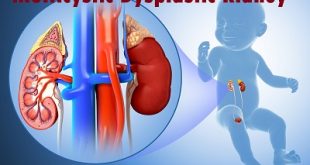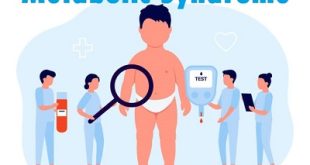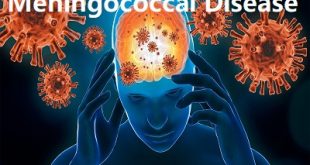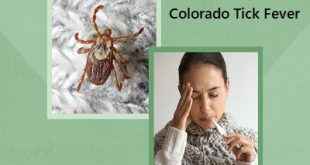Definition
Molluscum contagiosum is a mild skin disease (skin infection) caused by a virus (molluscum contagiosum virus, a member of the Poxviridae family) that causes usually painless small bumps or lumps (flesh-colored or skin-colored, dome-shaped papules); some may be umbilicated, meaning the lesion has a central depression with a spot in the middle that resembles a navel on the skin (umbilication). The disease occurs worldwide but is more prevalent in warm, humid climates.
The disease is usually not serious and, in most people, resolves in about 6 to 12 months without treatment. It is a common infection in children; direct person-to-person contact, sexual contact, and contaminated items like clothing, towels, or other objects may transmit the infection. Some consider it to be a sexually transmitted disease (STD), but many others simply consider it to be a skin disease that is contagious by any skin-to-skin and indirect incidental contact with the infecting virus in adults, the elderly, and children. The virus can infect all other parts of the body, including the face, by autoinoculation (self-transfer of the virus to another area of the skin).
Epidemiology
The prevalence of molluscum contagiosum is estimated to be around 8000 cases per 100,000 annually. Molluscum contagiosum is a common disease that tends to affect children and immunocompromised adults. Among children, boys and girls are affected equally by molluscum contagiosum. In adulthood, molluscum contagiosum is more prevalent in men than women. There is no racial predilection to molluscum contagiosum.
Pathophysiology
The incubation period ranges from two weeks to six months. Molluscum contagiosum virus infects only keratinocytes, and skin lesions are limited to the epidermis and do not have systemic dissemination. This virus produces proteins inhibiting human antiviral immunity, thus preventing the development of innate immunity response, and contributing to the persistence of skin lesions.
Molluscum contagiosum papules
Risk factors of molluscum contagiosum
Although anyone can get molluscum contagiosum, some people are more at risk, including:
- Children under 10 years of age
- People in tropical climates
- People involved in contact sports where skin-on-skin contact is more common
- Anyone with a weak immune system
- Individuals with atopic dermatitis
Causes of molluscum contagiosum
MC is caused by a virus known as the molluscum contagiosum virus (MCV).
This virus can be spread through:
Close direct contact – such as touching the skin of an infected person
Touching contaminated objects – such as towels, flannels, toys and clothes
Sexual contact – this includes intimate physical contact as well as sexual intercourse
If you become infected by the virus and spots appear on your skin, the virus can also spread to other areas.
It’s not known exactly how long someone with MC is contagious for, but it’s thought the contagious period may last up until the last spot has disappeared.
Molluscum contagiosum symptoms
Common locations for the papules are on the faces, trunks, and limbs of children. In adults, common locations are the genitals, abdomens, and inner thighs. The condition usually results in papules that:
- Are generally painless, but can itch.
- Are small (2 to 5 millimeter diameter). However, people with immunodeficiencies can develop larger lesions.
- Have a dimple in the center.
- Are initially firm, dome-shaped, and flesh-colored.
- Become softer with time.
- May turn red and drain over time.
- Have a central core of white, waxy material.
Molluscum contagiosum usually disappears on its own over a period of months to years in people who have normal immune systems. In people who have AIDS or other conditions that affect the immune system, the lesions associated with molluscum contagiosum can be extensive.
Complications of molluscum contagiosum
- Secondary bacterial infection from scratching (impetigo)
- Conjunctivitis when the eyelid is infected
- Disseminated secondary eczema; this represents an immunological reaction or ‘id’ to the virus
- Numerous and widespread molluscum contagiosum that are larger than usual may occur in immune-deficient patients (such as uncontrolled HIV infection or in patients on immune suppressing drugs), and often affect the face
- Spontaneous, pitted scarring
- Scarring may be spontaneous or due to surgical treatment
Diagnosis and test
- Your health-care professional can usually diagnose molluscum contagiosum based solely on its distinctive appearance. In the majority of cases, no testing is necessary.
- If the diagnosis is uncertain or in certain cases involving individuals with a weakened immune system, a skin biopsy may be performed by your health-care professional to confirm the diagnosis. Characteristic “molluscum bodies” will be seen under the microscope in the affected skin.
- Conditions that can mimic molluscum contagiosum include some skin cancers, warts, and other skin infections.
Treatment and medications
Molluscum is typically self-limited and will resolve in the majority of patients. In many cases, no specific treatment is necessary, and families can be advised to avoid sharing towel and clothes. Siblings should avoid bathing together. If possible, encourage the patient to avoid scratching the lesions. Young children with few lesions may benefit from placing a Band-Aid over the papules to avoid scratching and thus causing autoinoculation.
In children who have multiple papules or papules in cosmetically sensitive areas, treatment can be either physical or medical.
Cryotherapy
Physical treatment
- Cryotherapy (can result in dyspigmentation)
- Curettage (can scar)
- Laser ablation (can scar) – usually performed by a dermatologist
- Intralesional immunotherapy with Candida antigen
Medications
Cantharidin – Blistering agent applied directly to the lesion, and the site is then covered with a Band-Aid to prevent spread. Should be washed off with soap and water 2 to 6 hours after application. Should be performed in clinic. Usually needs to be repeated. This treatment is not offered by Seattle Children’s. There is a cantharidin-based product that will likely be approved by the Food and Drug Administration (FDA).
Podophyllin – Apply directly to lesion twice daily for 3 days a week for up to 4 weeks. Local erythema, inflammation, pruritis, and erosions can occur.
Wart paints containing salicylic acid to be applied per instructions on packaging until lesion resolves
Prevention
Molluscum contagiosum can be spread by touching the spots, although it may be months before spots appear after infection. Molluscum can also be spread to different parts of the body or to other people in bath or pool water, on bath toys, towels, face cloths or clothing.
You can help stop molluscum spreading by:
- Showering rather than bathing
- Washing and drying children’s bath toys after use
- Not sharing towels, face washers or clothing
- Drying the affected area last after showering
- Washing hands thoroughly after touching the spots
People with molluscum can attend school and work because clothing usually covers the affected areas.
Molluscum can also be sexually transmitted. For adults with molluscum on the genital area, transmission to sexual partners can be minimised by using condoms and dental dams, although these do not completely stop it spreading.
If you or your recent sexual partners become infected with molluscum, it’s a good idea to get tested for other sexually transmitted diseases (STIs)
 Diseases Treatments Dictionary This is complete solution to read all diseases treatments Which covers Prevention, Causes, Symptoms, Medical Terms, Drugs, Prescription, Natural Remedies with cures and Treatments. Most of the common diseases were listed in names, split with categories.
Diseases Treatments Dictionary This is complete solution to read all diseases treatments Which covers Prevention, Causes, Symptoms, Medical Terms, Drugs, Prescription, Natural Remedies with cures and Treatments. Most of the common diseases were listed in names, split with categories.







